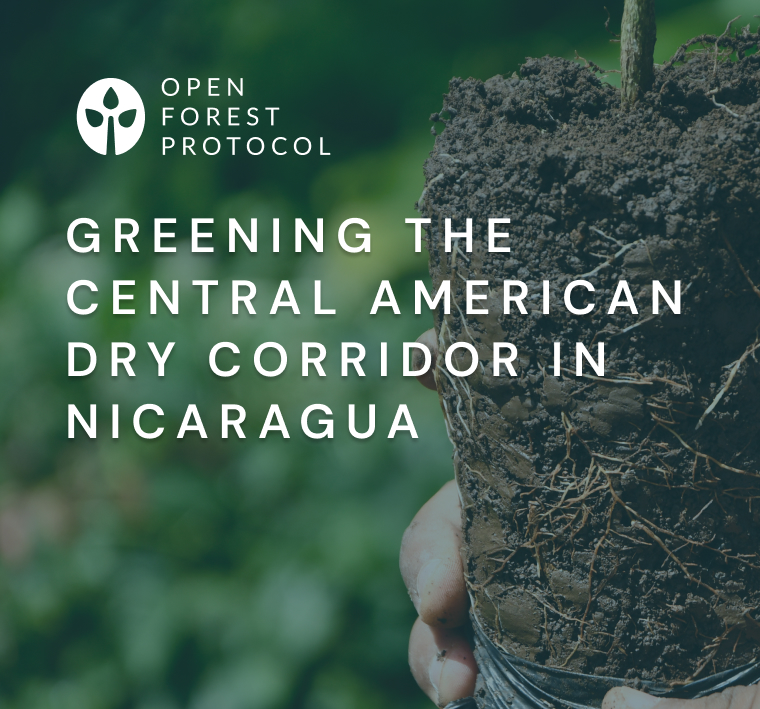The Beginner’s Guide to Forestation
Forests represent the richest pool of natural resources humanity has access to, and boy have we been accessing it. Every day, 41 million trees are cut down around the globe. Deforestation destroys vital habitat for threatened species, warms the globe, and threatens the livelihoods of forest-dependent human communities. The best way to reverse these negative trends is by preventing deforestation in the first place. The second best way is through habitat restoration.
The goal of a restoration project is to build resilient forests, which can sustain human and animal life into perpetuity. Therefore, it is vital that tree planting operations are monitored, recorded, and verified (MRV), and that project data is permanently and transparently stored. At this time, global forest projects do not have a standardized MRV procedure. This has led to many problems for both funders and suppliers, as it is unclear how much restoration actually takes place on a given plot of land. For instance, some trees get planted and immediately uprooted, or planted as massive stands of a single species that cannot support wildlife. In the worst cases, bad actors trying to exploit forest investments can simply lie about having ever planted or protected trees in the first place. The results in both scenarios defeat the original purpose of restoring land: to enrich and preserve an ecosystem while also sequestering carbon.
2021 kicks off the UN’s Decade on Restoration, during which governments around the globe will work collaboratively to heal the world’s damaged forests and natural areas. Governments are committing to reforesting vast swaths of the globe over the next ten years. The 1T challenge, launched by the World Economic Forum, is an effort to protect, conserve, and grow one trillion trees between 2021 and 2030. The UN estimates that the global restoration economy alone could command as much as 1 trillion dollars by the end of the decade. This money will be invested in green technology, green jobs, and forests that will return trillions of dollars to local economies in the form of ecosystem services.
Climate mitigation strategies that rely on improving natural processes are known as nature-based solutions. A recent study found that planting a trillion new trees could store 205 billion metric tonnes of carbon — the equivalent of 25 percent of the current atmospheric carbon pool — and enough to prevent a 1.5°C global temperature rise. Relying on nature to sequester carbon, rather than spending money on expensive carbon sequestration technologies, is the most secure route forward for climate mitigation.
There is, however, a need for technological developments within the realm of forestation. Companies at the forefront of forest tech are developing tree-planting drones, satellites that can track tree growth from space, and novel soil monitoring techniques that optimize nutrient flows. Technology companies have a lot to offer reforestation project operators in terms of optimizing the accuracy of MRV, reducing labor costs of reforestation, and improving the health of their trees.
Recent scientific literature surrounding forestation’s potential, has resulted in unprecedented attention from the financial sector. The global carbon market is growing at an exponential rate, with it expected to increase by a factor of 15 by 2030. Entirely new markets are opening up around the world as countries such as China and the United Kingdom are initiating their own emissions trading schemes. At present, 42% of existing carbon credits come from reforestation initiatives. With this in mind, investors are lining up to invest in forest projects that allow them to mint their own carbon credits while the price is still reasonable. In the words of Justin Adam, managing director for global lands at The Nature Conservancy, “The business of planting trees is going to be one of the biggest climate stories of the next 20 years.”
The Open Forest Protocol
The new forest economy will benefit a diverse array of stakeholders. Investors will profit from the explosive growth trajectory in forestation initiatives, while entrepreneurs have the opportunity to explore markets that are actively being established around such initiatives and the carbon generated therein. Lastly, and most importantly, local communities can find jobs and commercial opportunities while the environment will benefit from tree-based ecosystem services in the form of cleaner air, water, and soil. Given the scope of the crisis, it is vitally important that the incentive structures for each of these stakeholders are aligned, so that their efforts can be harnessed collectively. That’s where the Open Forest Protocol (OFP) comes in.
OFP is a reforestation ecosystem that connects reforestation projects, technology integrators, entrepreneurs, and investors in a digital marketplace and data platform. The OFP has two primary value propositions: (1) the creation of a standardized, technology-based MRV mechanism for forestation projects around the globe, and (building on the first value proposition) (2) the creation of data-backed carbon financing structures.
If humanity is going to avoid a hothouse Earth scenario, everybody is going to have to work together. That’s why OFP is an open-source and permissionless protocol: anyone and everyone interested in forestation and carbon sequestration can participate. OFP offers both new and pre-existing forestation projects the opportunity to integrate with the network and upload forest project data over the entire lifetime of a project. Notably, there is no centralized body profiting from OFP’s use; fees paid on the protocol go directly to community members validating each and every data upload from a given forest project.
The ultimate goal of OFP is to tie up any loose ends and inefficiencies in the forestation sector, create a solid foundation for a new global carbon economy, and play a leading role in humanity’s fight against climate change. For OFP, success means mobilizing the global forestation effort to remove humanity’s most pressing existential threat. To join the conversation, reach out to info@openreforestation.org.
Get the freshest news
Sign up with your email address to receive fresh news and updates.





.png)



